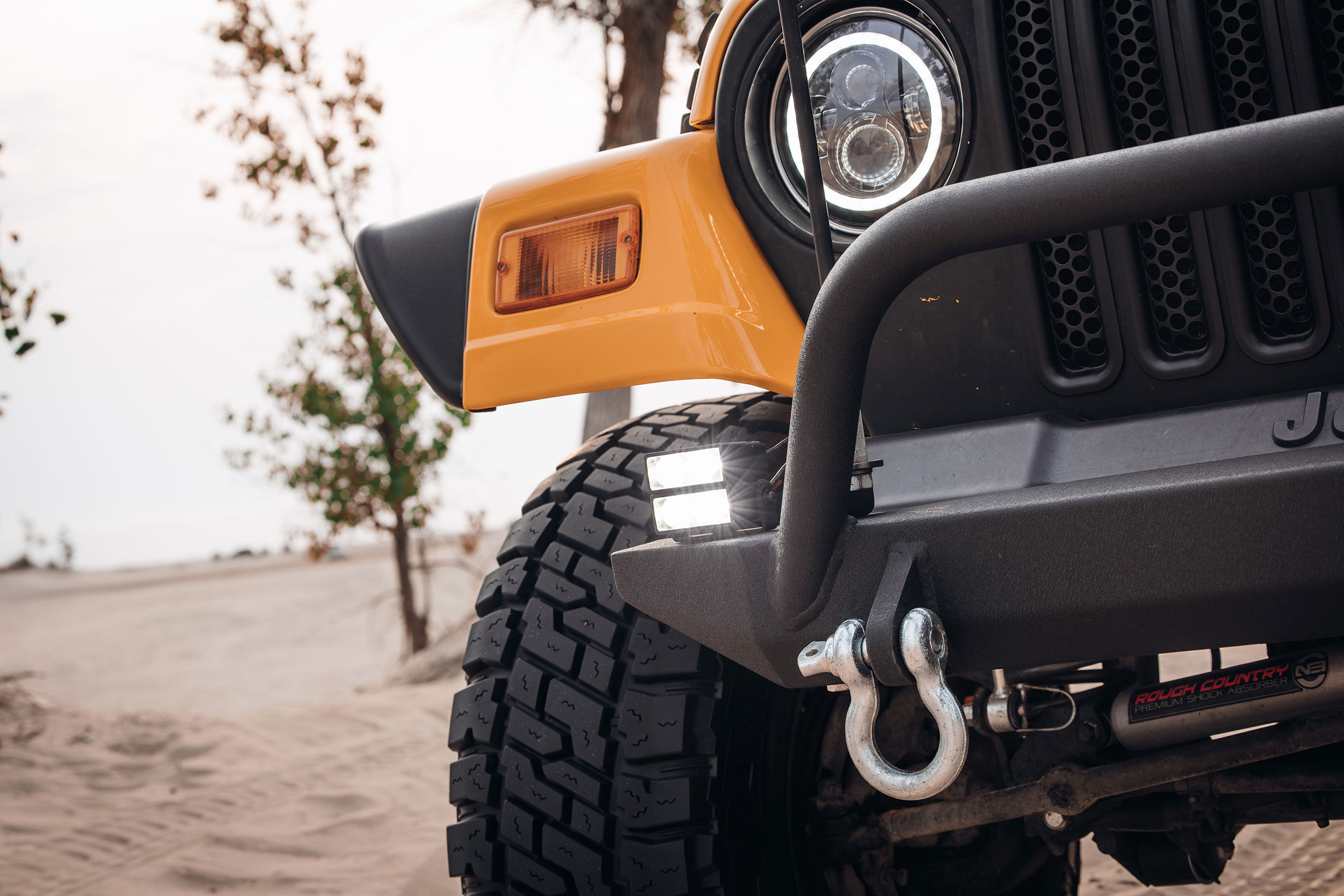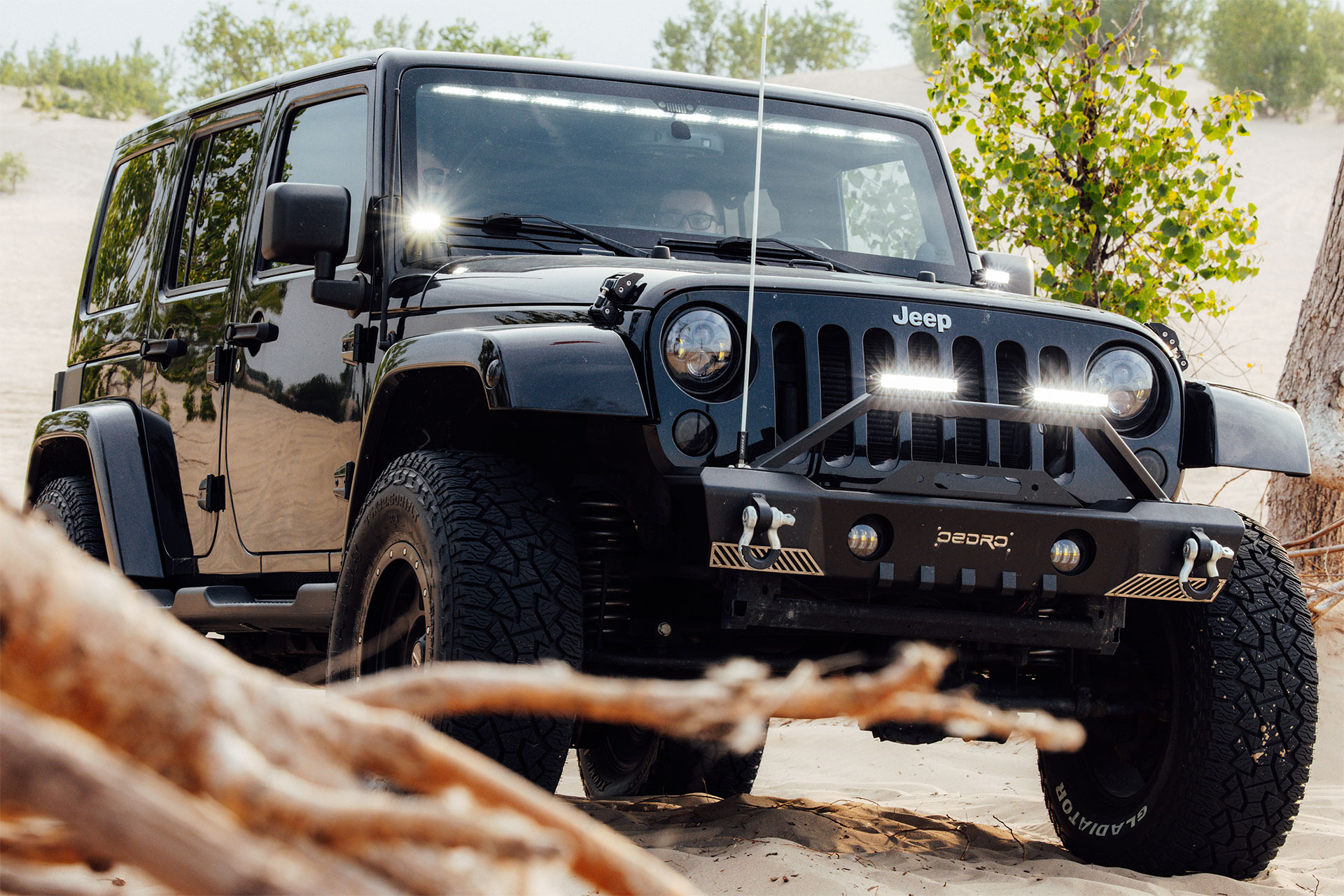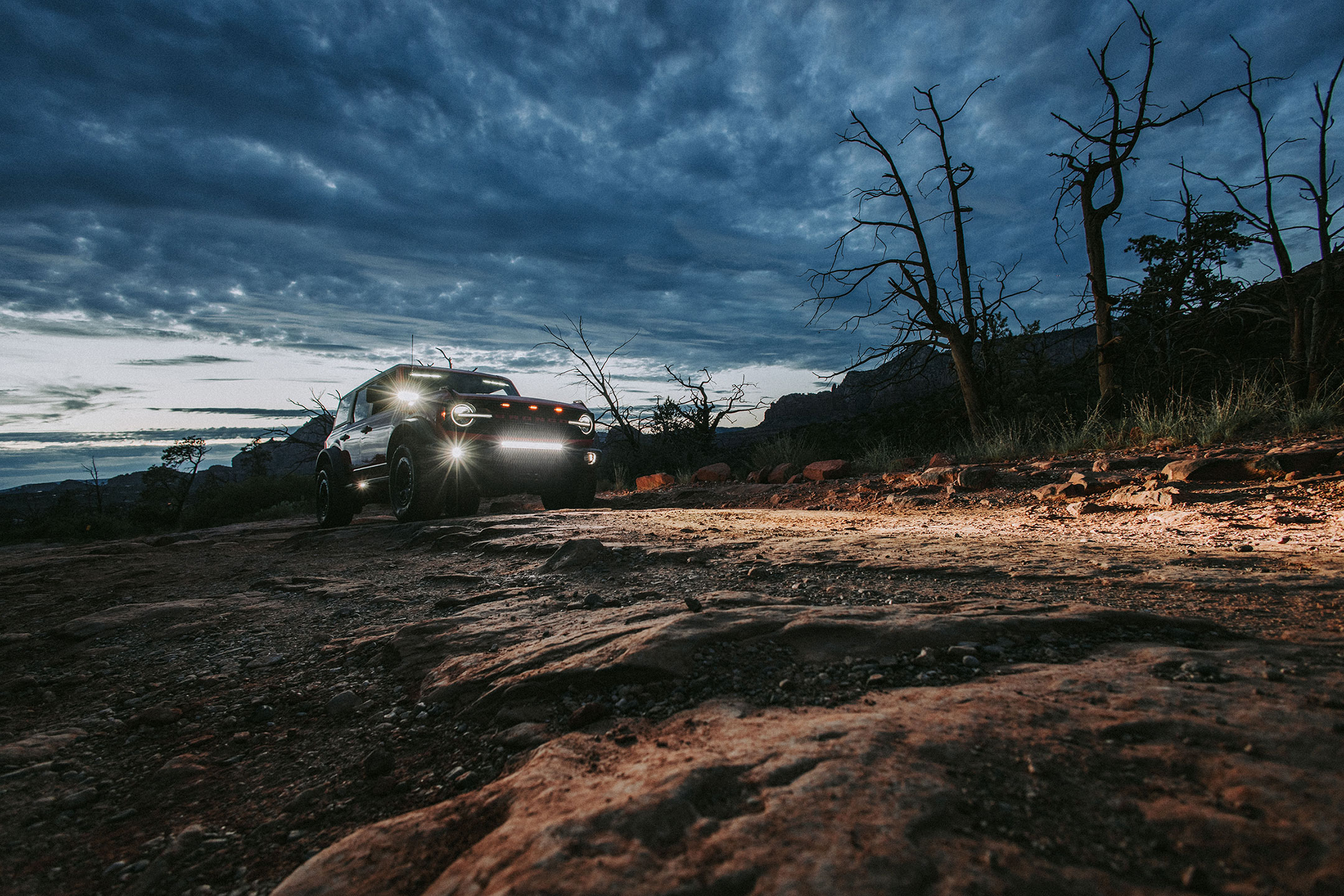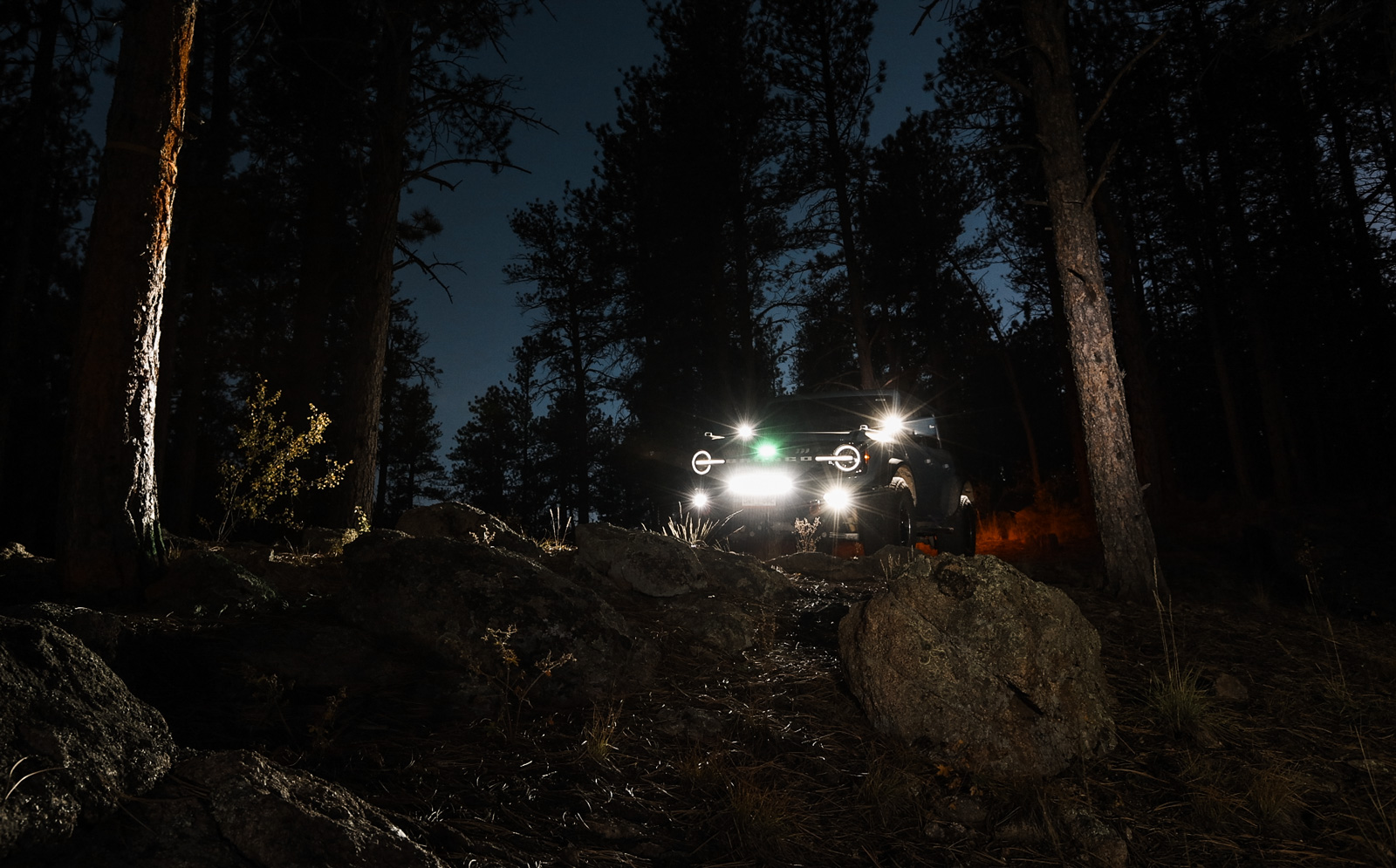Beach driving in a 4×4 offers an exciting alternative to off-roading in the mountains or backcountry trails. With breathtaking views, the sound of lapping waves and a cool breeze in the air, beach driving provides a unique blend of adventure and natural beauty. Whether you’re enjoying coastal ocean shores or exploring the sandy dunes of an inland lake, you’re sure to encounter challenging terrains. As with any off-road excursion, it’s important to be prepared with the right knowledge, equipment and gear to safely navigate the route and ensure a great experience.
In this blog, we delve into the importance of visibility, appropriate tire pressure, driving techniques for sand, essential recovery gear and safety considerations. These top tips for beach driving will help you make the most of your adventure.

The Importance of Increased Visibility
Visibility is paramount for driving off-road on beaches, dunes, and sandy shores. Other drivers, beachgoers, wildlife and unexpected obstacles can come from anywhere, so having adequate lighting ensures that you can see and be seen by others, reducing the chance of a collision. However, fog and changing conditions frequently near water may overpower the standard lighting equipment on your vehicle. And, driving in low light conditions, like dawn or dusk, requires even more visibility to spot potential hazards like hidden rocks, submerged objects, or sudden changes in the terrain.
Investing in high-quality lighting solutions such as LED lightbars or pod lighting can significantly increase your field of vision and allow you to react more quickly to changing situations. High-quality, off-road LED lights equipped with shatterproof silicone lenses like those offered by mpower are tough enough to withstand the salt, water and other debris found along the shores.
Because these areas are frequented by a variety of motorized vehicles, including dirt bikes, ATVs, UTVs and others, you may be required to mount a sand flag (also known as a whip flag or dune flag) 8-9 feet above your rig to increase your visibility to others. These help indicate your position even if your vehicle is obscured by sand or dust. Always review and follow the local rules and regulations.

Appropriate Tire Pressure for Maximum Traction
It should come as no surprise that it’s extremely easy to get stuck in loose sand. Airing down your tires is a standard practice when driving in sand. To create more surface area and improve traction, air down your tires with a deflator tool to around 15-20 PSI. This increase in surface area prevents the tire from sinking and allows it to float across the sand.
Driving on sand requires a delicate balance of acceleration and braking. It can be a natural reaction to apply more power when you feel your wheels beginning to slip, but easing off and modulating the power, or rocking the vehicle back and forth, can help your tires regain traction. Rocking the vehicle refers to shifting gears and moving the vehicle back and forth to create momentum and traction. If you find yourself stuck, stay calm and exit the vehicle if it’s safe to do so. Don’t stress too much, it’s common to get stuck and part of the fun of taking on challenging terrains. Continue reading to learn about the recovery gear you need to have an epic beach driving adventure.

Driving Techniques for Sand
Driving on sandy beaches can present a variety of unpredictable terrain, including soft sand, dunes and obstacles like logs or standing water. In addition to airing down and maintaining your speed, avoid oversteering and use gradual steering adjustments to maintain control, allowing the vehicle to drift naturally over the sand. Equally, avoid sudden stops and sharp turns as those can cause the vehicle to get stuck. It’s all about avoiding abrupt movements and maintaining a steady speed.
Dunes are beautiful landscapes formed by the wind’s movement of loose sand. They can vary in size and shape and pose unique challenges for vehicles. When driving on sand dunes, always go straight up or straight down. If you don’t make it to the top or want to go back, put the vehicle in reverse and drive straight down. Attempting to turn around while on the dune can cause a heavy 4×4 to get stuck or even roll over.
Many 4×4 vehicles include features that allow you to maximize traction over a variety of surfaces, but it’s important to know how and when to use these. While 4HI is sufficient for most driving situations in the sand, engaging the lower gear ratio of 4LO maximizes traction of all four wheels at low speeds. This can help you get through soft sand, steep dunes and downhill sections. Pro-Tip: Review your owner’s manual and familiarize yourself with the proper use of your four-wheel drive system and traction features before you go.

Essential Recovery Gear and Equipment
Preparing for your off-road beach adventure means packing the right gear. Bring plenty of water, sunscreen and snacks to keep you energized. A first aid kit is highly recommended for any unforeseen circumstances or in the event you need to help others. As the saying goes, hope for the best but plan for the worst.
Packing the right recovery gear will help you get out of the stickiest situations and spend more time adventuring. While most modern 4×4 vehicles are equipped with basic equipment like recovery points and a spare tire with a scissor jack, some additional equipment is necessary for off-roading in the sand. A winch, shackles and recovery straps are the ultimate tools to have, but most situations can be remedied with a good set of traction boards and a small shovel to dig yourself out of the sand. And, don’t forget a set of gloves, a tire patch kit, a tow strap and an air compressor to air up a flat tire or air back up once you return to the pavement. Because these items can be bulky and heavy, consider a dedicated bag or hard case for storing these items–you’ll want them to be easily accessible as well.

Safety Considerations for Sand
Sand flag? Check. Proper lighting and recovery equipment? Check.
You may also be required to purchase an OHV (Off-Highway Vehicle) or ORV (Off-Road Vehicle) permit to drive in the area, which is why it’s essential to research the area you plan to explore ahead of time. Prepare for any potential hazards and know the local regulations and restrictions before you go.
But what about the rules of the road? A good rule of thumb for beach driving is that the same rules of the paved roads often apply. Maintaining safe speeds, traveling with the flow of traffic, yielding to others and indicating your path of travel can help keep everyone safe. You may even encounter specific rules to protect the environment and wildlife in the area, too. As off-road enthusiasts, it is crucial to practice responsible recreation to preserve the beauty and protect the access of these areas.
Understanding tide schedules is critically important for safe beach driving. Always check local tide charts and plan around the high tides to avoid getting stuck or stranded. Enhancing your off-road beach driving experience involves preparation, proper technique, and packing the right gear. By following these tips, you’ll improve your skills and safely elevate your off-road experience. So gear up, head to the beach and enjoy the natural beauty of this sandy adventure!
Articles You Might Like
-
March 31, 2025
Bronco Owners, Level Up!
Introducing the Dual-Color Interior Lightbar that Transforms Your Rig -
December 16, 2024
Illuminating the Bright Ideas Shaping the Next Generation of Off-Road Lighting
Illuminate your off-road adventures with mpower
There are no street lights where you’re headed. That’s the way you like it. But whether you’re headed up the side of a mountain, getting down and dirty in a mud bog, or racing across snow-covered fields, you’d better have a clear view of whatever lies ahead.


